The best VR headset is always a topic for debate, and this argument has only grown in scale as the Metaverse has hit the mainstream.
Whether you enjoy PC gaming, home consoles, laptops, or even smartphones, there is undoubtedly a VR headset out there for you. Here, we’ll be looking at some of the best VR headsets currently on the market.
Due to the price investment required for some of these VR headsets, we’ll break down everything you need to know before purchasing.
Let’s check out the best VR headset of 2023!
The Big Question: Which VR Headset Is the Best?
Tl;dr, the Oculus Quest 2 is the best VR Headset. It offers the most features while still maintaining a relatively affordable price. Check out our more detailed guide below to see more about why the Oculus Quest 2 is so superior to other VR headsets.
What About the Metaverse?
For those unaware, the Metaverse is a virtual reality world where real estate can be bought and sold. VR users can inhabit 3-D avatars in this world while interacting with other Metaverse occupants. While yet to take shape, the Metaverse is undoubtedly an exciting concept, and, if executed correctly, VR headset prices are sure to skyrocket with the influx of new users. Getting in early before the price hike could save you lots of money down the road!
What Happened to Phone-Based VR?
Phone-based VR is dead or at least will be very soon. The two most prominent players in this space were Samsung Gear VR (powered by Oculus) and Google Daydream. Google is now omitting VR support from its newer smartphones, and Oculus has confirmed that the Gear is being discontinued.
The Best Augmented Reality Headsets
The Oculus Quest 2 is one of the leading contenders for the best VR headset or AR headset. However, smart glasses are also on the rise, and here are some great products to consider.
- Google Glass Enterprise 2
- Microsoft HoloLens 2
- Lenovo ThinkReality
- Lenovo Star Wars: Jedi Challenges
- Merge AR/VR Headset
1. Oculus Quest 2 – Best VR Headset Overall
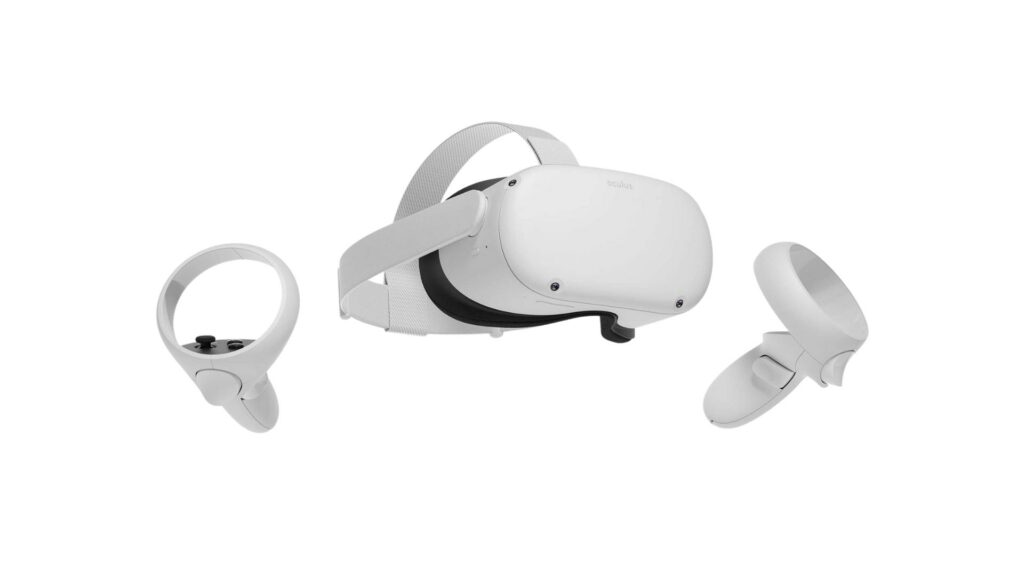
Price: $299/£299 ● Resolution: 1832×1920 (per eye) ● Refresh Rate: 120Hz ● Field of View: 90 degrees ● Controllers: Oculus Touch / Xbox One and Series S/X controllers ● Platforms: PC
The Oculus Quest 2 is the best VR headset of 2023. Later products in this list are more powerful than the Oculus Quest. However, when it comes time to buy a high-quality yet affordable VR headset, this is the best you will find. It’s pretty surprising to see a VR headset with such a high rating for such a low price, but we’ll break down exactly why you can feel comfortable investing in this product.
Running on a Qualcomm Snapdragon XR2 chipset, this headset has some of the crispest visuals seen on a VR headset yet. The Oculus Quest 2 improves on everything provided by the Original Quest, from sharper resolution, quicker response times, and lighter weight.
PC gamers can rejoice as Oculus Link provides access to your favorite PC exclusive titles such as Half-Life! In conclusion, for the best VR headset in terms of functionality and performance for a price that doesn’t break the bank, the Oculus Quest 2 is the way to go!
Pros:
- Great value for money
- Comfortable to use
- Easy to understand for beginners
Cons:
- Facebook account link needed
2. Valve Index – Best for Immersion
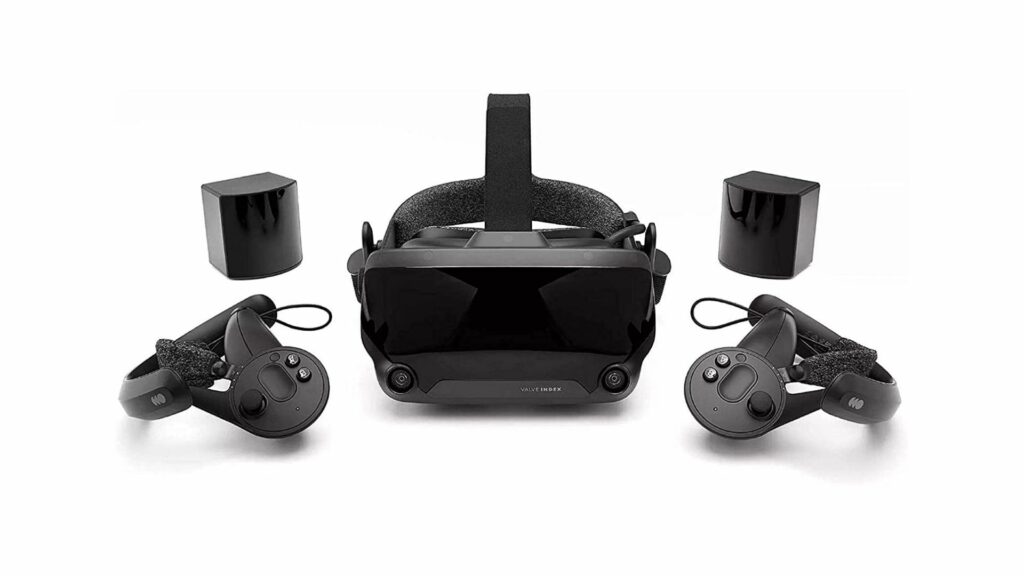
Price: $999/£920 ● Resolution: 1440×1600 (per eye) ● Refresh Rate: 144Hz ● Field of View:130 degrees ● Controllers: Valve Index Controllers, HTC Vive, Vive Pro Controllers ● Platforms: PC
The Valve Index is the best VR headset available for immersion. Thanks to the unique controls that support full finger tracking, there has never been a headset like this that makes you feel as if you are inside the game world. Furthermore, the new base stations provide a larger playing area, reducing the risk of your adventure coming to a screeching halt by walking into the TV!
However, don’t think the Valve Index moved all of its chips only onto immersion. This headset provides some of the best visuals of any VR headset. Moreover, the USB ports allow future technology to plug right in, while the near-field speakers produce easily detectable and sharp audio. The headset is comfortable, made from highly durable materials, and isn’t too heavy either! Overall, the Valve Index is the best VR headset for immersion, and you certainly get what you pay for with this model!
Unfortunately, the Valve Index is a little pricey, especially compared to the mentioned Oculus Quest 2. The headset comes packaged with all the accessories, and it will cost a pretty penny to pick up the entire kit. However, if you are looking for one of the best VR headsets with pristine graphics for your PC, you should consider investing in the Valve Index!
Pros:
- Immersive accessories (finger-tracking)
- Comfortable
- All-around high-quality
Cons:
- Finger tracking is limited
- Expensive
3. HTC Vive Pro 2 – Best Premium Headset
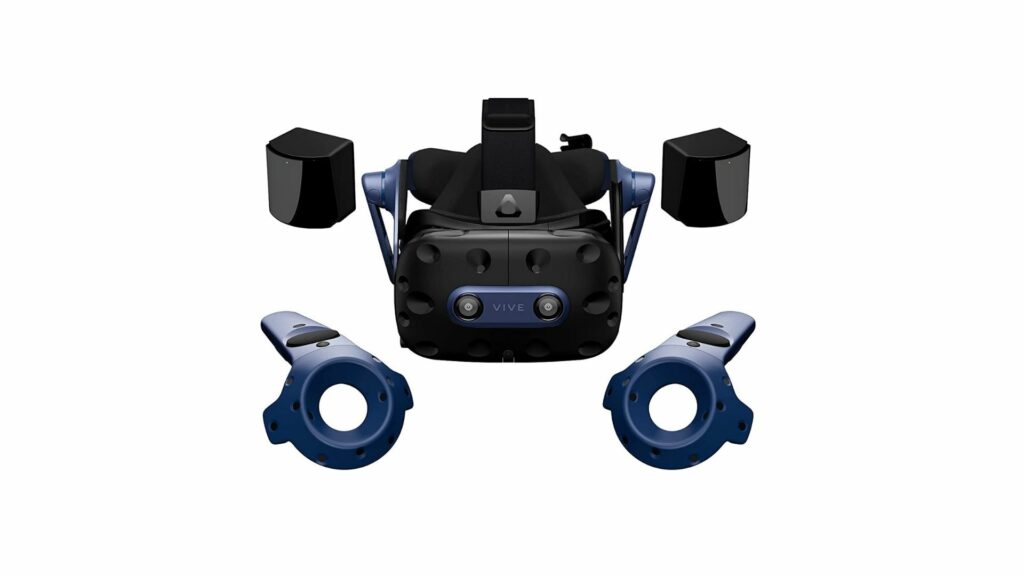
Price: $1399/£1299 ● Resolution: 2448×2448 (per eye) ● Refresh Rate: 120Hz ● Field of View: 120 degrees ● Controllers: HTC Vive and Vice Pro Controllers ● Platforms: PC
If you plan to spend upwards of $1000 on a VR headset, you would hope to receive one of the best, if not the best, VR headsets out there. The HTC Vive Pro 2 does not disappoint in this regard, as nearly everything about it screams “high-quality.”
With some of the highest resolution of any VR headset on this list, the HTC Vive Pro 2 provides picture-perfection that will quickly help you to forget about the screen-door effect. While the resolution of this headset is its main draw, there are plenty of other reasons to pick it up.
The clear-cut display runs at a palatable 120Hz, and with a 120-degree FOV, you can feel truly immersed in whatever game you enter. It was difficult to justify purchasing the Valve Index due to its price, so you can imagine the difficulty in recommending the HTC Vive Pro 2. However, if you have any expendable income and are looking for the best VR headset, the HTC Vive Pro 2 will satisfy your needs.
Pros:
- Amazing display and visuals
- Mature Tracking
- Precise tracking
Cons:
- Very expensive
- Prone to overheat
- Difficult to set up for beginners
4. HP Reverb G2 – Best Windows Headset
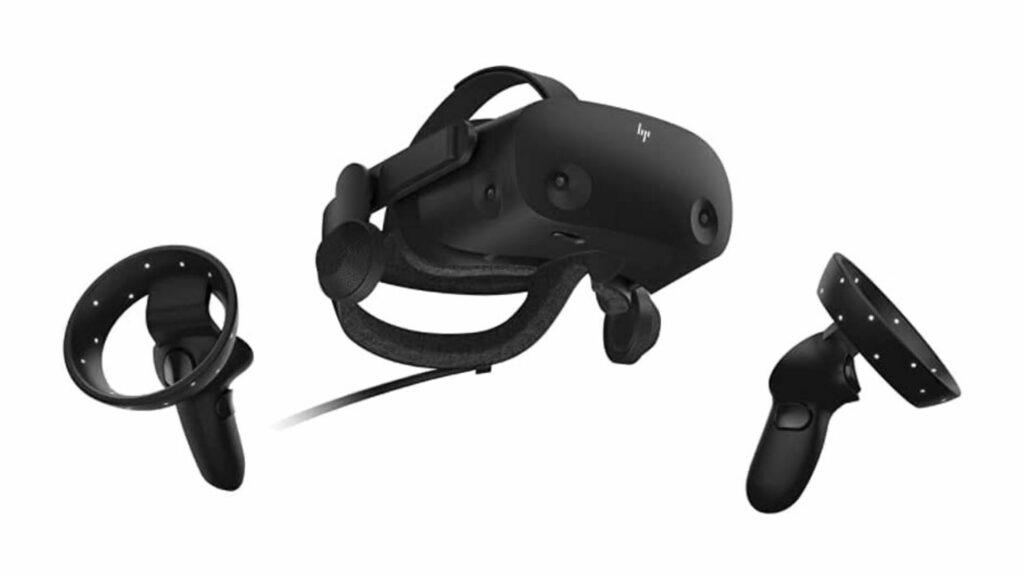
Price: $615/£530 ● Resolution: 2160×2160 (per eye) ● Refresh Rate: 90Hz ● Field of View: 114 degrees ● Controllers: HP Reverb G2 Controllers ● Platforms: PC
While the HP Reverb G2 cannot compare functionally to the more premium headsets above, it can still provide an enjoyable gaming experience for its price. With a similar resolution to HTC Vive Pro 2 but for more than half the price, the HP Reverb G2 boasts stunning visuals, sharp displays, and zero focal issues.
The HP Reverb G2 has some of the highest resolution displays of any headset on this list (with a 2160×2160 display per eye for a total of 4320×2160). Because of this, even playing with lower settings with a lower resolution display, you can enjoy clarity in your visuals. The physics IPD toggle allows users to adjust the headset, ensuring images align perfectly with your eyes and eliminating screen-door effects.
Reviewers have criticized the Reverb G2 for its limited tracking space. The 114 degrees FOV is all you will get with this headset with no base stations. However, the IMU gyro sensors are decent enough at predicting movement that this shouldn’t become an issue. In conclusion, for display junkies looking to get their fix of crisp, high-quality imaging, the HP Reverb G2 is the best VR headset you could hope for!
Pros:
- High resolution
- No screen-door effect
- Togglable IPD slider
Cons:
- Low FOV
5. HTC Vive Cosmos Elite – Best Wireless PC Headset
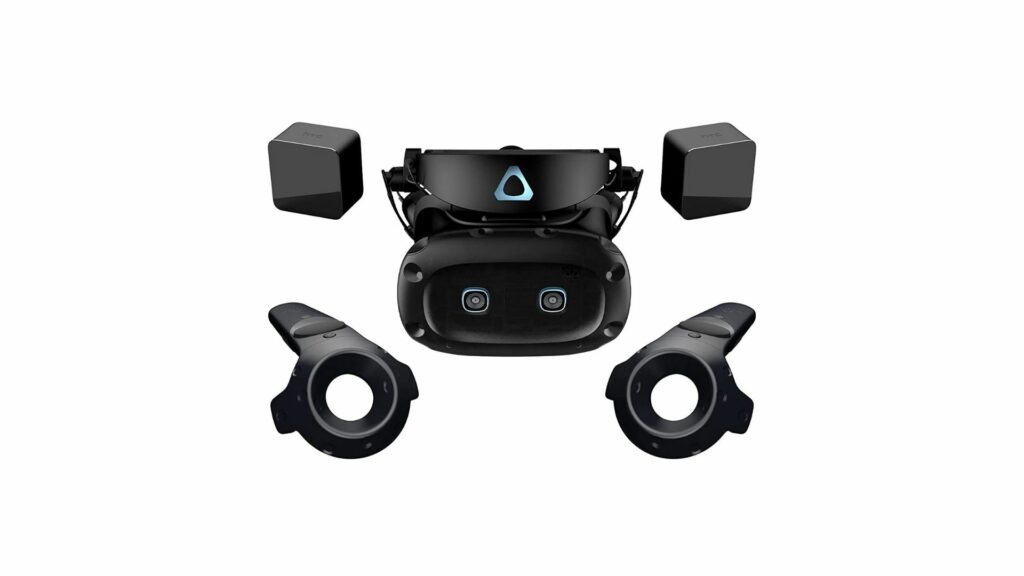
Price: $899/£899 ● Resolution: 1440×1700 (per eye) ● Refresh Rate: 90Hz ● Field of View: 110 degrees ● Controllers: HTC Vive and Vive Pro Controllers ● Platforms: PC
The HTC Vive Cosmos walked so the HTC Vive Cosmos Elite could run! The Cosmos Elite is relatively similar to the original Cosmos, with most of the original device’s problems ironed out.
The HTC Vive Cosmos Elit comes packaged with a set of controllers, first-generation base stations, and Half-Life: Alyx. Furthermore, buyers will also get six months of Viveport Infinity subscription! Because of this, there will be lots of games you can try out right away with your new headset!
However, while the Cosmos Elite is a definite upgrade over the Base Cosmos, some quality-of-life features have been lost in the transition. For example, the immediacy of the HTC Vive Cosmos’ tracking is much slower in this newer product.
For some, this will be all the information necessary to avoid purchasing it, as a large area is required in some cases to ensure accurate motions. However, those unfazed can rest assured that they will receive the best VR headset for wireless gaming when purchasing this product!
Pros:
- Decent Display
- Includes various bundled items.
Cons:
- More of an upgrade than a new product
- Less responsive than the original Cosmos
6. Sony Playstation VR – Best for Console

Price: $399/£399 ● Resolution: 1832×1920 (per eye) ● Refresh Rate: 120Hz ● Field of View: 100 degrees ● Controllers: Dualshock 4, Playstation Move ● Platforms: Playstation 4, Playstation 4 Pro, Playstation 4 Slim
The Sony Playstation VR is the best VR headset for console gamers. As consoles and console products often are, the specifications for this headset are lacking compared to the PC alternatives. However, the SPVR is much cheaper than a brand-new top-of-the-line gaming PC!
The SPVR offers a smooth gaming experience thanks to the 120Hz refresh rate. Additionally, the FOV, while not the largest, is enough to get by. Sony has also confirmed that, while a next-gen PSVR headset will be coming to the PS5 sometime in 2023, the current SPVR will be fully functional with the new console.
Furthermore, some of the best VR games have been released on PSVR. Sony’s gaming seal of approval has always been kept to a high standard, and this is no different with their VR titles!
Pros:
- Lots of games to try out
- Can use a traditional controllers
Con’s:
- Resolution lacking compared to PC VR
- Sony VR controllers are less comfortable compared to traditional VR controllers
7. Oculus Rift S – Best VR Headset for PC (Older)
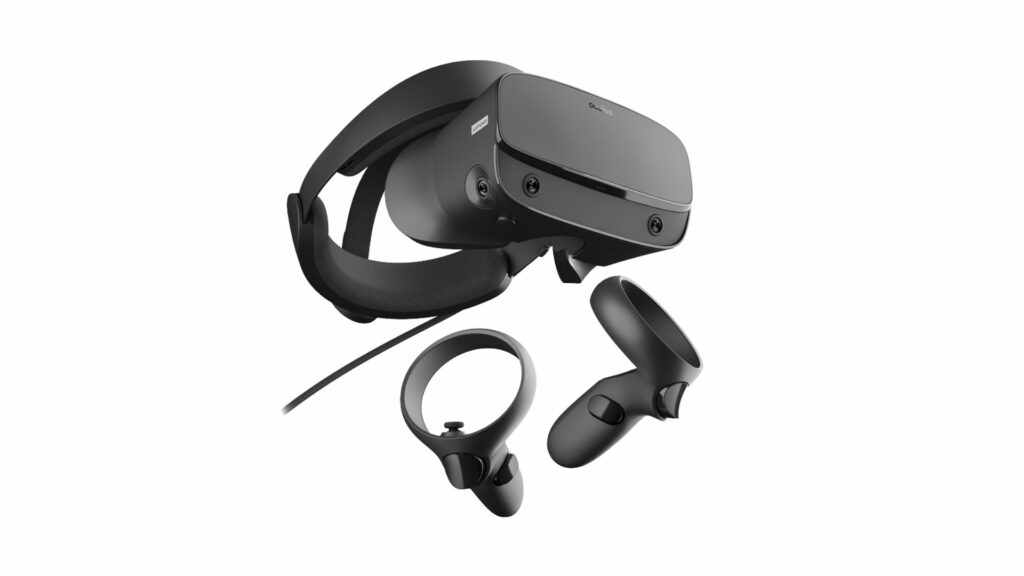
Price: $399/£399 ● Resolution: 1280×1440 (per eye) ● Refresh Rate: 80Hz ● Field of View: 110 degrees ● Controllers: Oculus Controllers ● Platforms: PC
The Oculus Rift S seems to be a relic of a bygone era. When the world was first introduced to the world of VR with the original Oculus Rift, VR gaming appeared to be advancing miles by the day. However, the Oculus Rift S quickly revealed that VR gaming would take a long time to be expertly refined.
While this VR headset is by no means an expensive paperweight, its low refresh rate has been known to cause motion sickness. However, this should not be a problem considering the headset is also prone to crashing!
That being said, the Oculus Rift S is still a great older VR headset. The lack of external tracking stations makes it easy to set up and become immersed.
Furthermore, after being plugged directly into your PC via USB, it can provide much more detailed experiences than if it were powered by itself (the rub here requires you to have a powerful enough PC to allow the Rift S to reach its full potential).
As of July 2021, the Oculus Rift S has been officially discontinued, meaning you can longer purchase it without contacting a third-party supplier.
Pros:
- Decent visuals
- No external tracking stations
Cons:
- Low refresh rate could induce motion sickness
- Prone to crashing
8. Pimax 5K Super – Best for Hardcore VR Enthusiasts
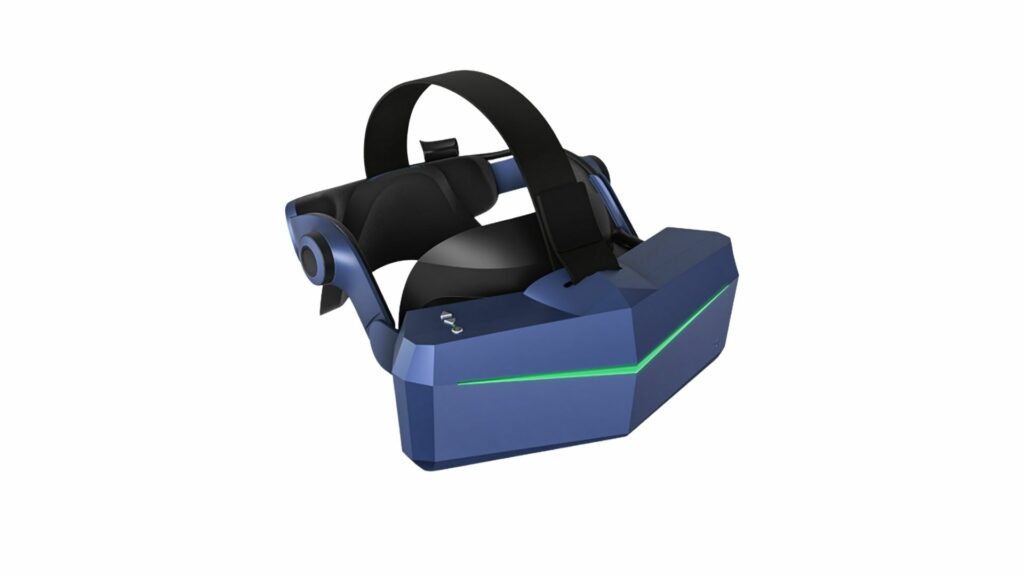
Price: $879/£749 ● Resolution: 2560×1440 (per eye) ● Refresh Rate: 180Hz ● Field of View: 200 degrees ● Platforms: PC
The Pimax 5K Super runs two 1440p displays on either side, resulting in fantastic gaming clarity. Additionally, the whopping 180Hz refresh rate and 200 degrees FOV will soon make you forget you’re playing a game and instead will transport you into a new world.
This is one of the best VR headsets for crystal clear image quality boasting nearly 4K in terms of pixel count. That’s more than most PC/consoles today!
However, the Pimax 5K Super is rather bulky, and the price reflects its high quality. This VR headset is not for the faint of heart, and only those who choose to live and die by their headset should entertain picking up this behemoth!
Pros:
- Great Specs all around
- Clear visuals
- Large FOV
Cons:
- Bulky
- Expensive
9. HTC Vive Flow – Best VR Headset for Smartphones
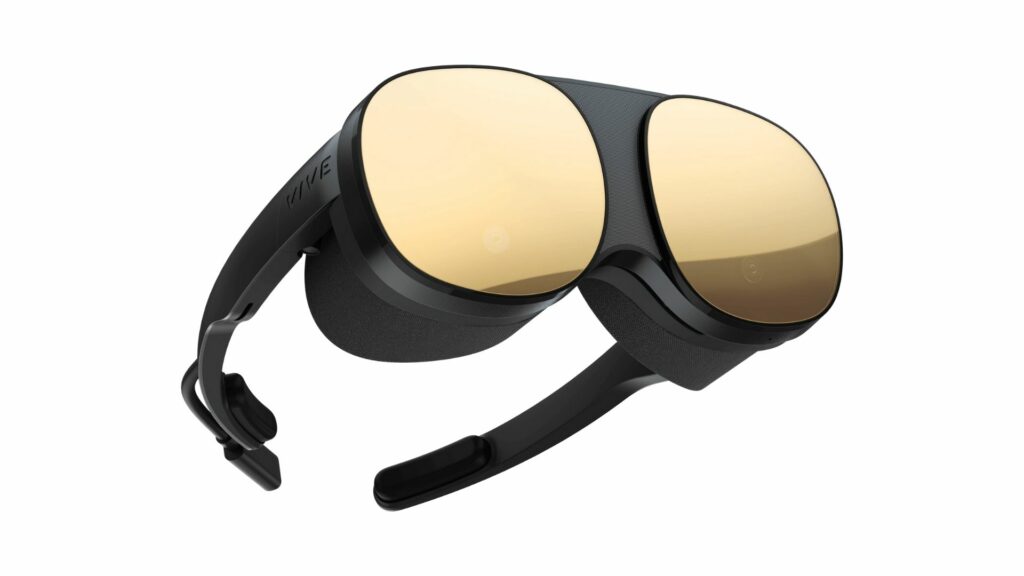
Price: $499/£499 ● Resolution: 1600×1600 (per eye) ● Refresh Rate: 75Hz ● Field of View: 100 degrees ● Controllers: Android Smartphone ● Connections: ● Platforms: Viveport/Android
The HTC Vive Flow is by no means a competitor in the world of VR headsets. However, it was never meant to be. This VR headset knows its niche and does its best to provide a functioning VR experience to those without consoles or any kind of gaming PC.
The HTC Vive Flow is incredibly compact and lightweight, making it more portable than other VR headsets. Furthermore, being controlled directly through an Android device does away with controllers.
As you can imagine, the battery life leaves a lot to be desired with something this size. The HTC Vive Flow requires an almost constant connection to an outlet, or you run the risk of your VR adventure coming to an unexpected halt. Still, for those looking for the best VR headset for their smartphone devices, the HTC Vive Flow is about as good as you will get!
Pros:
- Portable
- Suitable for those without consoles/gaming PC
Cons:
- Smartphone controls
- More expensive than better PC VR headsets
10. Varjo Aero – Best for Image Clarity
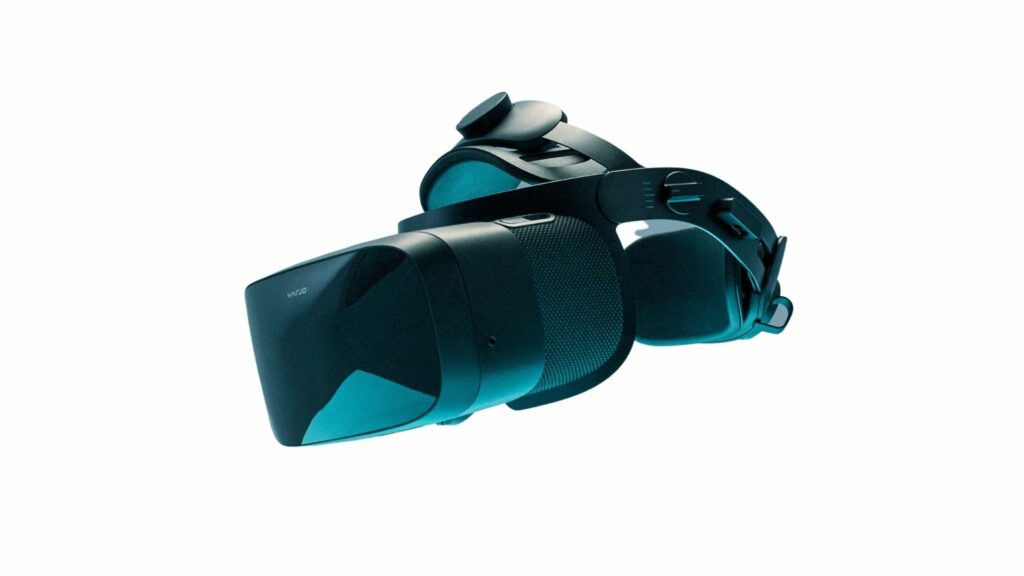
Price: $1990/£1990 ● Resolution: 2880×2720 (per eye) ● Refresh Rate: 90Hz ● Field of View: 115 degrees ● Platforms: PC
Finally, let’s wrap things up with the Varjo Aero, the best VR headset for overall image clarity. Taking one look at the phenomenal resolution of this headset should tell you all you need to know. You can expect ultra-clear displays for a truly immersive experience when purchasing this product.
The Varjo comes equipped with Mini LED backlighting and calibrated panels for various colors! Indeed, the Varjo Aero is an industrial-quality VR headset.
While the pricing is quite high, several additional features justify the premium cost. These include:
- Eye-tracking cameras
- IPD adjustment
- 150 NIT brightness
Pros:
- Clear display
- Standard USB-C
Cons:
- Expensive
- Accessories (controllers/headphones/etc) not included
FAQs
How Does “Outside-in” VR Compare to “Inside-out”?
You may already have heard of Outside-in and Inside-out tracking. Outside-in tracking is where an external device tracks the headset and accessories. These could be sensors placed on the floor, positional trackers, or cameras.
Inside-out tracking is where a camera is placed on the headset or device and tracks its position based on the external environment. There are pros and cons for both of these so take a look at the guide below:
Outside-in
Pros:
- Best for accuracy
- More trackers can be added to improve accuracy
- Latency is better – reducing nausea
Cons:
- If the sensors lose sight of you, your motion cannot be tracked
Inside-out
Pros:
- Freedom of movement
Cons:
- Lower accuracy/latency compared to Outside-in
Why Don’t Virtual Reality Goggles Use Gyroscopes?
This depends on the VR headset you are using. Most VR headsets use IMUs – these being a combination of gyroscope and accelerometer) inside the device. This is used to locate and track head movement.
What Kind of Sensors Does Oculus Rift Use?
The Oculus Rift uses infrared LED constellations built into the HMD and controllers. These are colloquially referred to as Oculus Tracking. The LEDs are then picked up by two sensors designed to detect the light’s movement and transfer it into positional data for your game.
Why Isn’t Oculus Focusing on Leg Sensor VR Support?
Facebook is currently working on a full-body VR suit, but, as you can imagine, this is taking quite a lot of time and is by no means at the top of the to-do list. With how many years it took to perfect headset-based VR, the intricacies required to track an entire body or even a leg are immense. Additionally, VR is a new concept that many have yet to warm to. Buying a headset is simple and easily accessible, whereas a bodysuit may turn newcomers away.
Oculus vs. Vive/Valve: What Sensor Technology Is Better?
Both have their advantages, and the answer will depend on your preferences. Oculus technology is less accurate but requires no sensors, whereas Valve technology is more accurate but requires sensors.
Is 60hz Not Fast Enough for a VR Headset?
Ideally, your VR headset should have a minimum of 90Hz. Any less has been known to cause severe motion sickness while playing.
Will All VR Headsets Eventually Sell User Data? Why or Why Not?
There is no evidence supporting the idea that headsets will sell user data. However, as more social media companies dip their toes into the VR world, there is a possibility that more and more VR headsets will end up selling user data.
How Do I Connect an Oculus Quest 2 to a PC?
WIRED CONNECTION
- Open the Oculus app and add your headset.
- Select “Link (Cable)” as the connection method.
- Plug one end into the headset and one end into the PC.
- Follow the instructions on the screen.
AIR LINK CONNECTION
- Open the Oculus app and add your headset.
- Select “Air Link (Wireless)” as the connection method.
- Put on your headset and open Settings.
- Select the Experimental box and toggle Air Link on.
- Select your PC.
- Input the pairing code on your headset into your PC.
- Follow any further instructions on your headset.
How Do I Connect My VR Box With Windows PC?
- Download external software on your PC (Kinoni Server, Trinus VR, etc.) This is necessary to use VR on non-VR devices.
- Download the same software on your phone.
- Connect your smartphone to your PC and run the software on both devices.
- Place the smartphone in the VR box.
How Do I Play PC VR Content on Oculus Quest 2?
To use the Oculus Quest 2 on your PC, you must first visit the official Oculus website and download the software required. You can find the download link and other helpful setup information here.
What Is the Difference of VR for Phone and for PC?
In short, system power. PCs have much more power when it comes to processing power allowing for high-quality imaging with little to no latency problems. Phone-based VR, although portable, cannot compete with high-end gaming PCs.
Can Multiple VR Headsets Be Connected to One Device?
Yes, connecting multiple VR headsets to one device is possible. However, this requires multiple GPUs, and the display will be identical between all headsets.
Do VR Headsets Like HTC Vive and Oculus Rift Have a 3D Effect?
VR headsets have a 3D effect due to each eye seeing different screens. This allows different effects to be shown to different eyes without having to overlay them (like in traditional 3D)
Why Is the Oculus Quest a Good Move in the VR Industry?
Several factors contribute to success in the VR industry. These include cost, comfort, specifications, level of immersion, accessibility to newcomers, and more. The Oculus Quest (specifically, the Oculus Quest 2) perfectly balances all these factors to provide a high-quality product.
Which Is Better, Htc Vive or Oculus Quest 2?
The Oculus Quest 2 is better than the HTC Vive as it is cheaper, more comfortable, lighter, and has better screen resolution and refresh rates. Furthermore, it receives regular updates ensuring it maintains a high standard.
Can You Use Oculus Quest 2 Without a PC?
The Oculus Quest 2 is a standalone VR headset that can be played with or without a PC.
Oculus Rift, HTC Vive Pro, Valve Index, or Pimax 5K Plus?
Depending on your priorities, all these headsets have their appealing points. The Oculus Rift S is now discontinued meaning it is no longer available for purchase. The HTC offers great lightweight VR experiences, the Valve Index has the best immersion, and the Pimax 5K Plus has the best resolution.

A gaming lover from a very young age, Justin has always had a keen eye for building his own computers or racing sims so that he can race his identical twin (and usually lose at the actual race).
Justin in the founder of BeStreamer and sees it as a free resource to help all gamers around the world




Leave a Reply